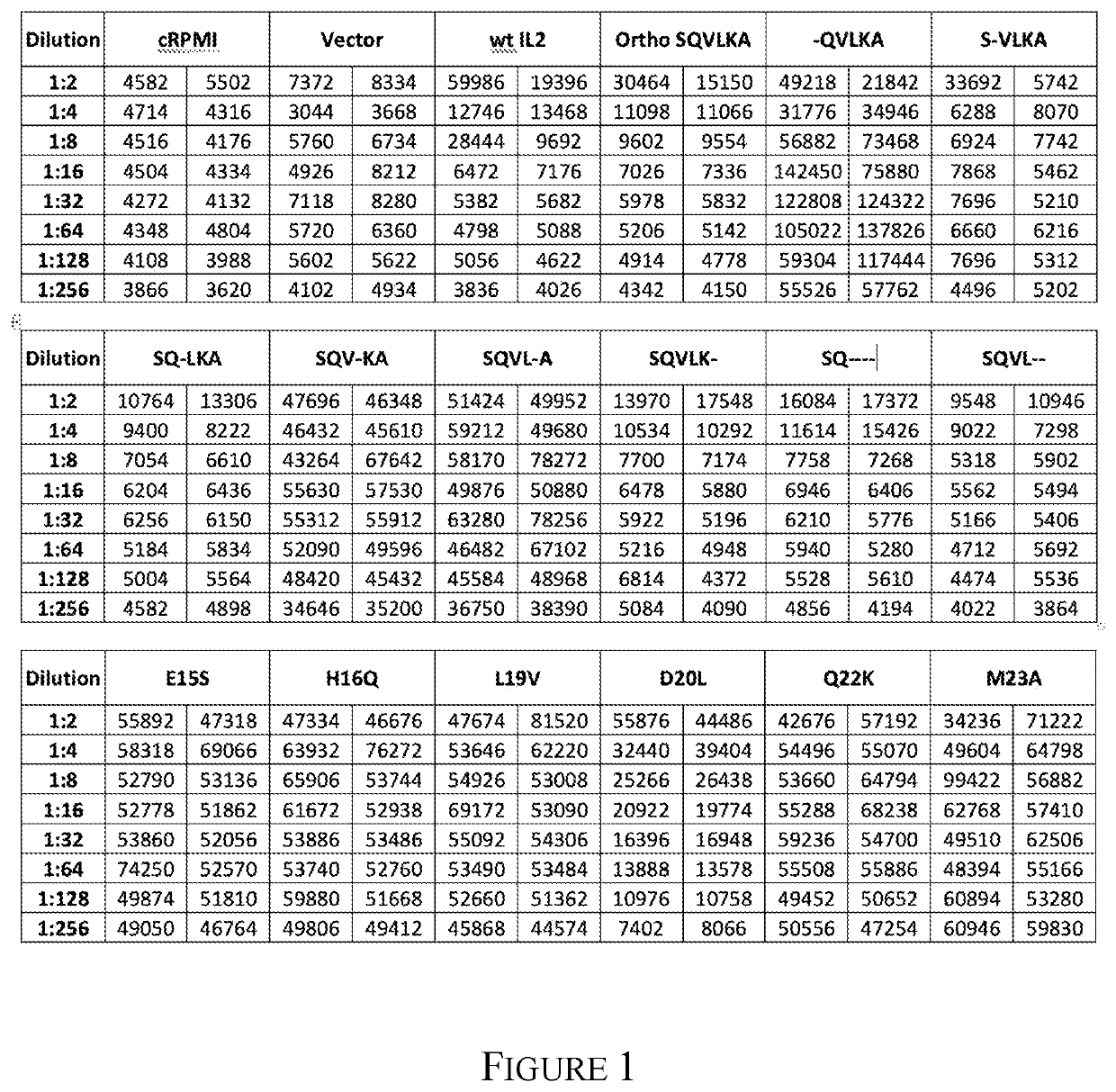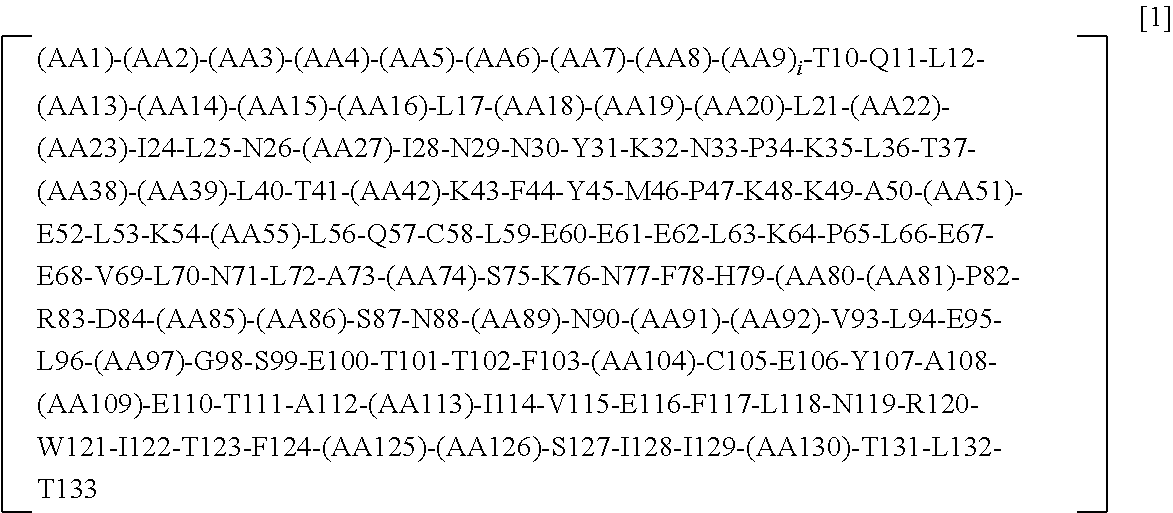Il-2 orthologs and methods of use
a technology of il-2 and il2, which is applied in the field of control of the differentiation, development and proliferation of cells, can solve the problems of short lifespan of il2, significant toxicity in human subjects, and the need for close control of the environment of ‘living drugs’, and achieve the effect of reducing binding
- Summary
- Abstract
- Description
- Claims
- Application Information
AI Technical Summary
Benefits of technology
Problems solved by technology
Method used
Image
Examples
example 1
n of the Human IL2 Expression Vector pcDNA3.1 / Hygro(+)-huIL2
[0579]The human IL2 DNA ORF (Genbank NM_000586.3) was synthesized (Life Technologies GeneArt Service, Carlsbad, Calif.), and amplified via PCR using Platinum SuperFi II DNA polymerase kit (item #12361050, ThermoFisher) following the manufacturer's protocol, and using primers:
(SEQ ID NO: 153)5′ TATAGTCAGCGCCACcCATGTACAGGATGCAACTCCTGTC 3′
which incorporates and NheI restriction site, and
(SEQ ID NO: 154)5′ TATAGGGCCCTATCAAGTCAGTGTTGAGATG 3′
which incorporates an ApaI restriction site. The PCR fragment was visualized on a 1% agarose gel (item #54803, Lonza, Rockland, Me.), excised from the gel and purified using a QIAquick PCR Purification kit (item #28106, Qiagen, Germany) according to the manufacturer's protocol. The purified PCR fragment and mammalian expression vector pcDNA 3.1 / Hygro(+) (#V87020, ThermoFisher) were digested with NheI and ApaI (#R0111S and #R0114L, New England Biolabs, Ipswich, Mass.) restriction enzymes. The...
example 2
n of the Human IL2 ORTHO Expression Vector pcDNA3.1 / Hygro(+)-huIL2-ORTHO
[0582]An expression vector which introduced six mutations into the human IL2 ORF (E355, H36Q, L39V, D40L, Q42K and M43A; all numbering is based on the full length human IL2 ORF NM 000586.3 numbering) was assembled in substantial accordance with the teaching of Example 1 for the human IL2 expression vector in pcDNA3.1 / Hygro(+), with the following exceptions: The initial template DNA used for PCR was synthesized with the E35S, H36Q, L39V, D40L, Q42K and M43A mutations.
example 3
ion of Mutations into pcDNA3.1 / Hygro(+)-huIL2 or Back-Mutations into pcDNA3.1 / Hygro(+)-huIL2 IRTHO Expression Vectors
[0583]All mutations or back-mutations (reverting a mutation in pcDNA3.1 / hygro(+)-huIL2-ORTHO back to match the wild type human IL2 ORF) were introduced into the pcDNA3.1 / Hygro(+)-huIL2 or pcDNA3.1 / Hygro(+)-huIL2-ORTHO expression vectors using a Quik Change II Site Directed Mutagenesis Kit (#200524, Agilent Technologies, Santa Clara, Calif.) in substantial accordance with the manufacturer's protocol.
[0584]Table 5 lists the mutations generated, the template into which the mutation was introduced, and the primer sets used to introduce the mutation. The transformation of the Quik Change PCR reactions into E. coli, as well as the isolation and sequence analysis of the plasmid DNA, was performed using substantially the same protocol as in the generation of the pcDNA3.1 / Hygro-huIL2 expression vector. The abbreviations for the templates are: Template 1=pcDNA3.1 / hygro(+)-huIL2...
PUM
| Property | Measurement | Unit |
|---|---|---|
| molecular weight | aaaaa | aaaaa |
| molecular weight | aaaaa | aaaaa |
| molecular weight | aaaaa | aaaaa |
Abstract
Description
Claims
Application Information
 Login to View More
Login to View More - R&D
- Intellectual Property
- Life Sciences
- Materials
- Tech Scout
- Unparalleled Data Quality
- Higher Quality Content
- 60% Fewer Hallucinations
Browse by: Latest US Patents, China's latest patents, Technical Efficacy Thesaurus, Application Domain, Technology Topic, Popular Technical Reports.
© 2025 PatSnap. All rights reserved.Legal|Privacy policy|Modern Slavery Act Transparency Statement|Sitemap|About US| Contact US: help@patsnap.com



